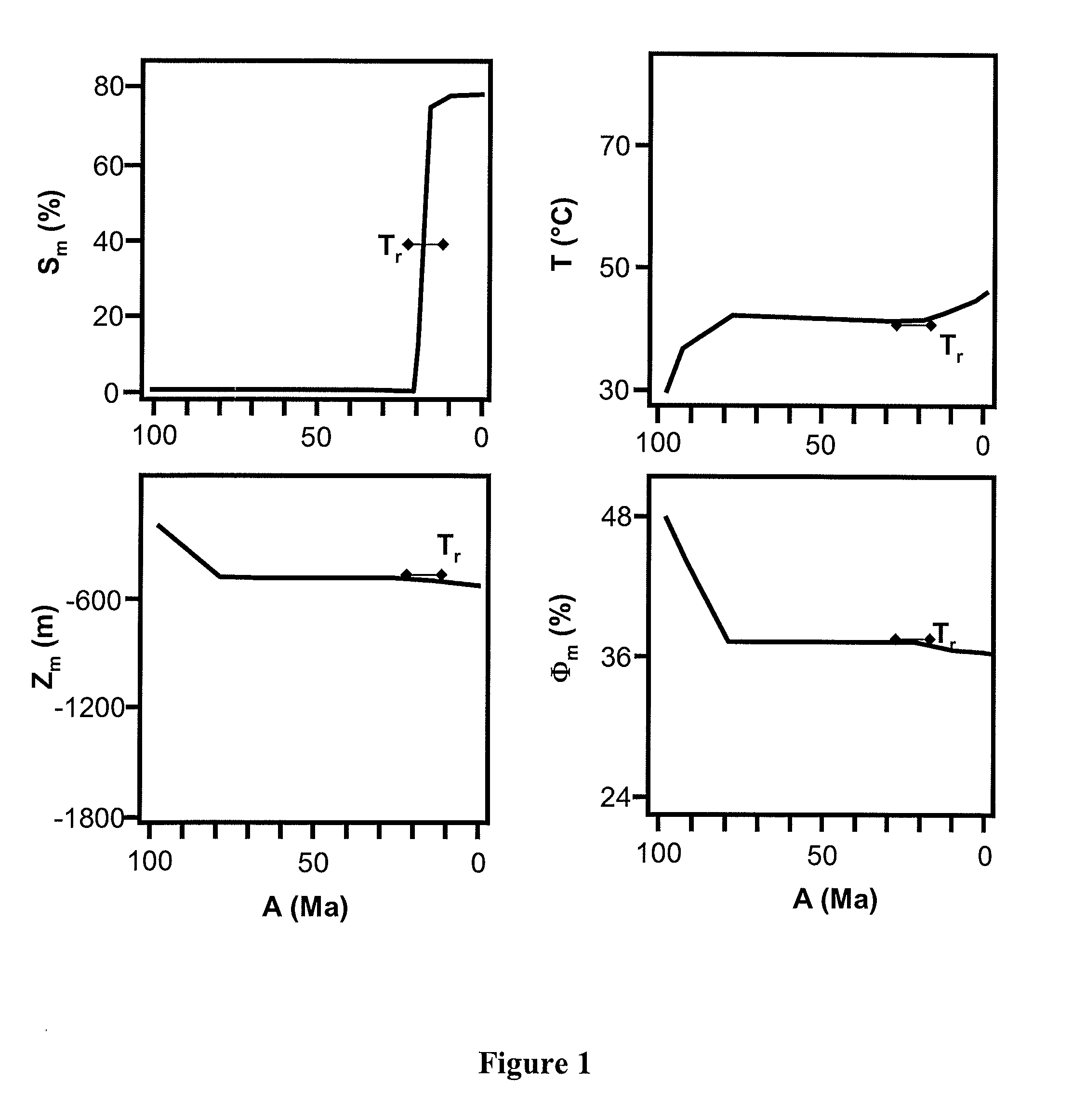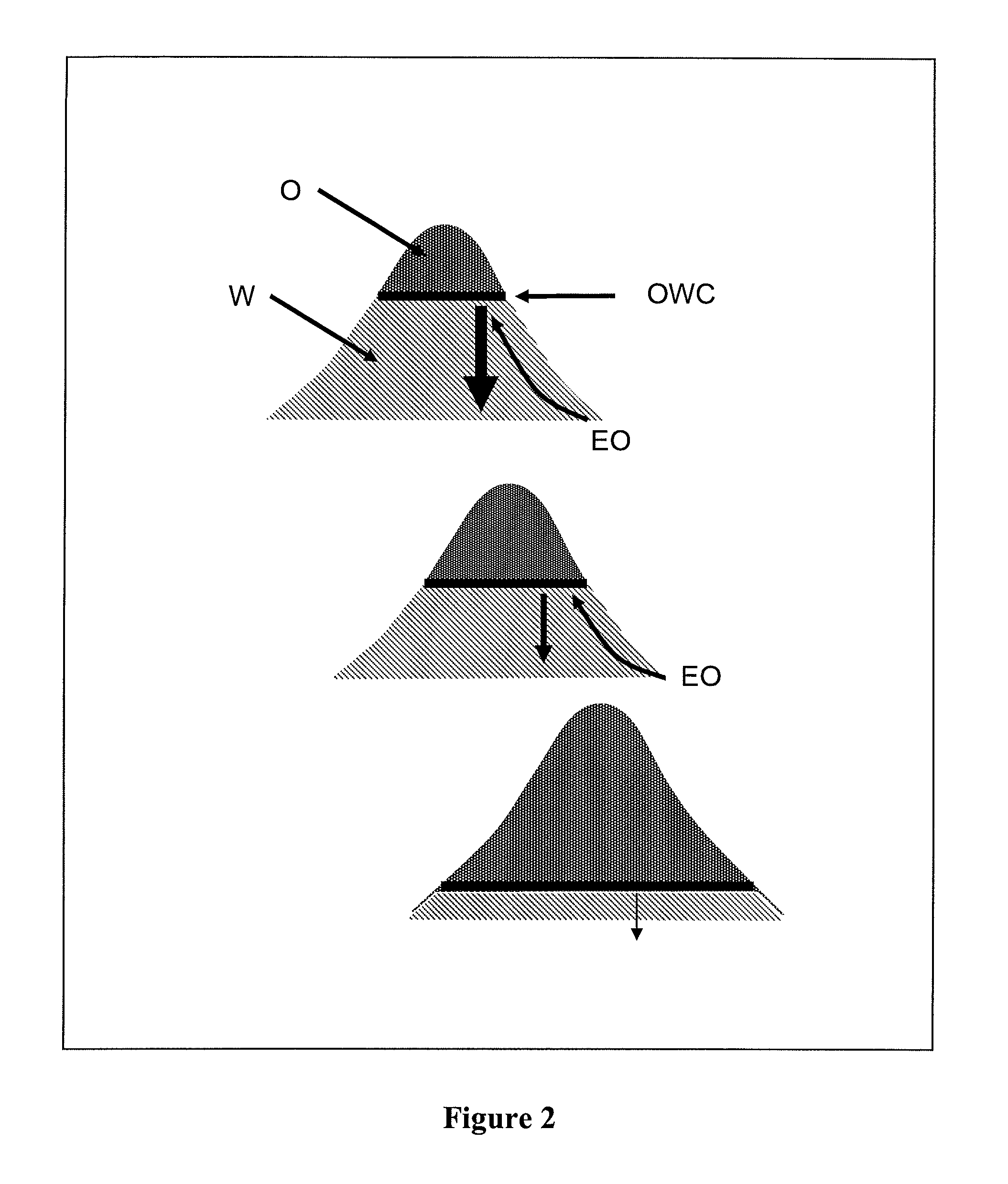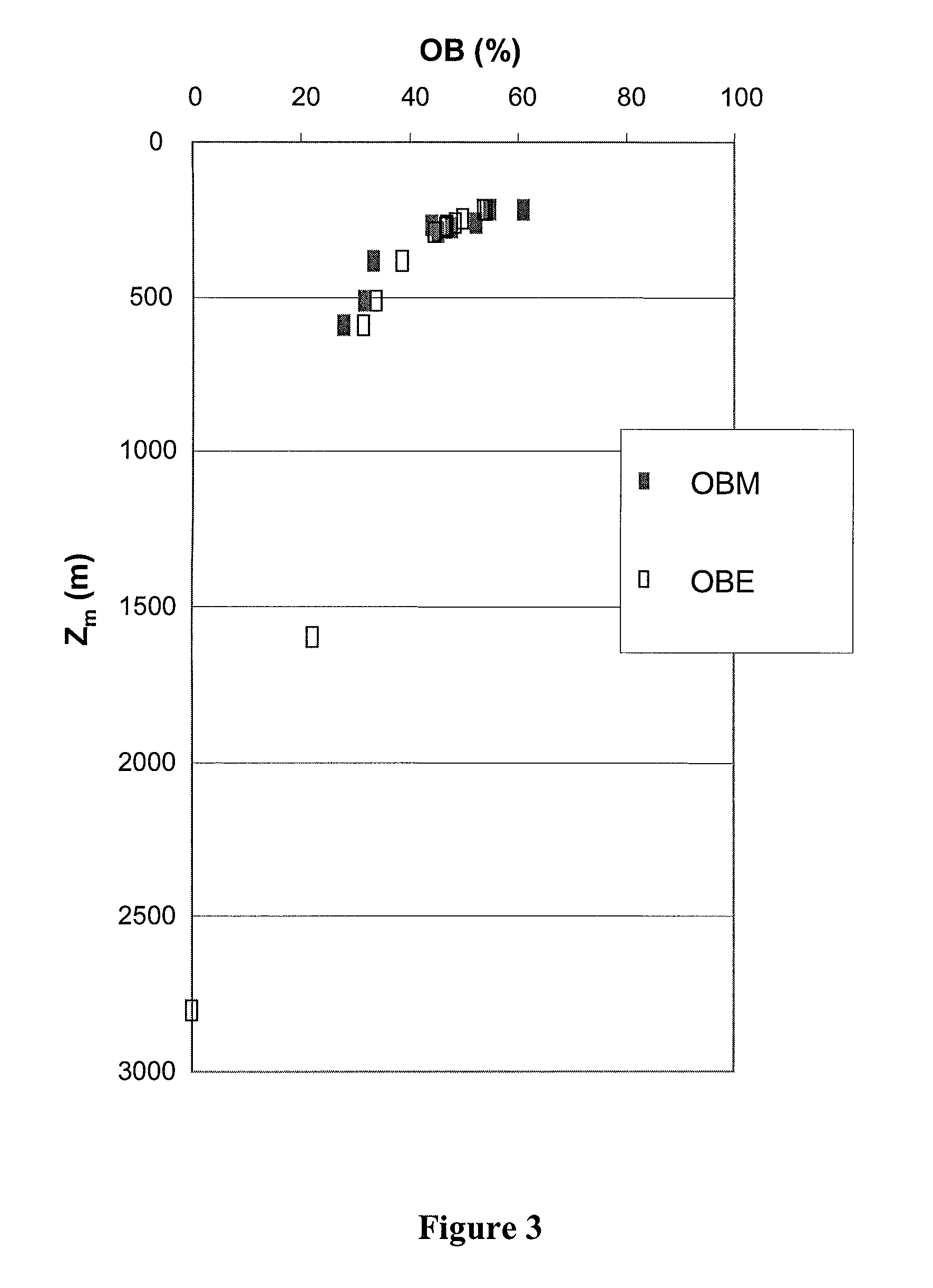Method of evaluating the biodegradation of hydrocarbons trapped in a basin
a hydrocarbon and biodegradation technology, applied in biochemistry equipment and processes, bio biochemical equipment and processes, etc., can solve the problems of difficult production and commercially less profitable, increasing economic need for quantitative tools, and increasing the difficulty of producing heavy oil
- Summary
- Abstract
- Description
- Claims
- Application Information
AI Technical Summary
Benefits of technology
Problems solved by technology
Method used
Image
Examples
Embodiment Construction
[0056]The method according to the invention allows to evaluate the biodegradation of hydrocarbons trapped in a geologic structure such as a petroleum reservoir, i.e. to evaluate the amount of molecules making up these hydrocarbons destroyed during filling of the structure (referred to as trap). The molecules are destroyed through the action of a bacterial population located in an aquifer that is below and in contact with the hydrocarbons. This evaluation allows for example to determine the development conditions of a petroleum reservoir.
[0057]The basic idea consists in calculating the mass ratio of oil disappeared through biodegradation to the initial oil. This method is generally implemented in parallel with or after basin modelling. It mainly comprises three stages:
[0058]1—Estimating the amount of hydrocarbons present in a trap without taking account of the biodegradation,
[0059]2—Calculating the amount of hydrocarbons consumed through biodegradation,
[0060]3—Evaluating the biodegra...
PUM
| Property | Measurement | Unit |
|---|---|---|
| saturation threshold | aaaaa | aaaaa |
| temperature | aaaaa | aaaaa |
| temperatures | aaaaa | aaaaa |
Abstract
Description
Claims
Application Information
 Login to View More
Login to View More - R&D
- Intellectual Property
- Life Sciences
- Materials
- Tech Scout
- Unparalleled Data Quality
- Higher Quality Content
- 60% Fewer Hallucinations
Browse by: Latest US Patents, China's latest patents, Technical Efficacy Thesaurus, Application Domain, Technology Topic, Popular Technical Reports.
© 2025 PatSnap. All rights reserved.Legal|Privacy policy|Modern Slavery Act Transparency Statement|Sitemap|About US| Contact US: help@patsnap.com



